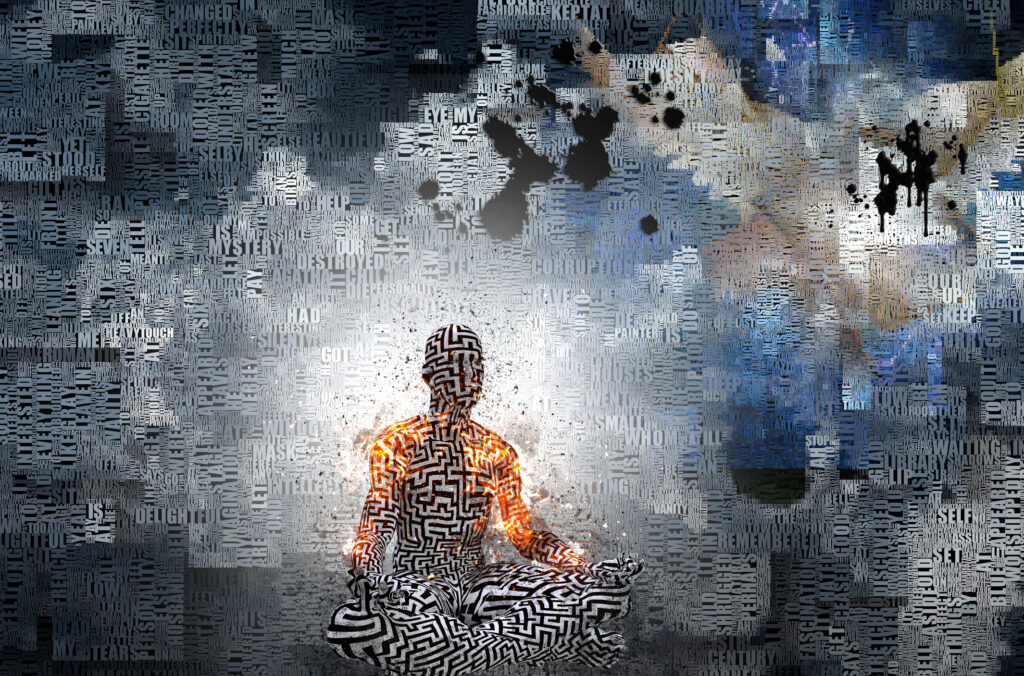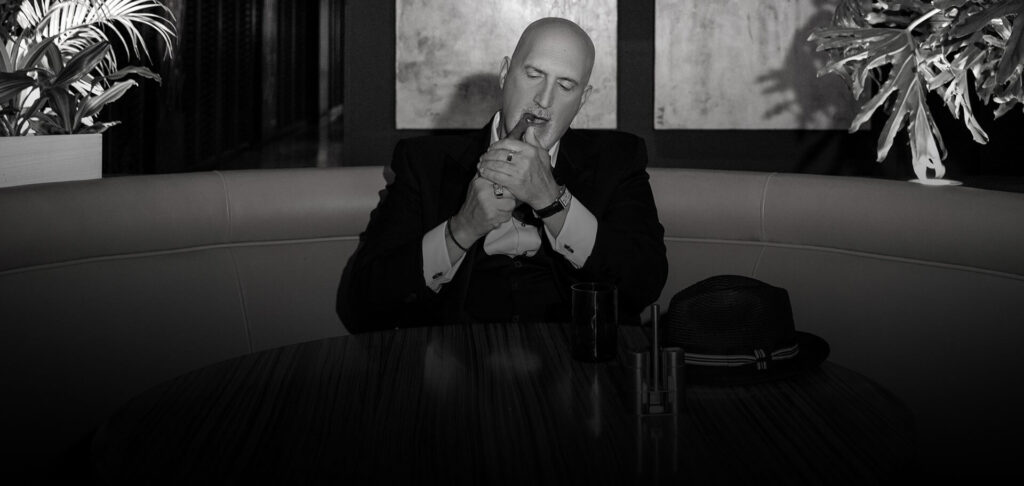Escaping The Matrix
“Remember … there is no spoon.”
(Author’s Note: This one is going to go deep fast, and then loop around a bit, all requiring some commitment, probably demanding a few readings, but I bet it will be worth many readings after you’ve read it once … ENJOY!)
Take A Walk With Me On The Wild Side of POWER | CREATIVITY | INFLUENCE
For thirty years I’ve been working with clients personally and professionally helping them become more:
- Powerful in their lives, i.e.: able to take the action that leads to the results and outcomes they intend
- Creative in how they approach thinking and decision-making, with an aim at helping them become more adaptable and artful in acting strategically
- Influential in their interactions, becoming masterful at communicating authentically and persuasively to engage, enroll and empower others
This is ultimately about how you can develop deep personal mastery so you can create the life you want to be living … a life lived on your own terms, without compromise.
So if you’re ready walk with me for a bit and we’ll explore the journey I’ve take to where I am today in the work I do.
A Little Background:
In the early 1980s I began developing a model of thinking about thinking, or more specifically thinking about how to improve thinking, that I called “Transformational Applied Philosophy” … T.A.P.
I named what I was working on Transformational Applied Philosophy because I was focused on building a phenomenologically grounded model of transformational ontological change, designed around the work of a few philosophers I was reading deeply at the time.
The philosophers I was reading at the time included: Georg Wilhelm Fredrich Hegel (post-kantian logic and phenomenology), Edmund Husserl (existential phenomenology), Arthur Schopenhauer (aesthetic existentialism), Martin Heidegger (existential ontology), Maurice Merleau-Ponty (embodied ontological existentialism), Ludwig Wittgenstein (metaphysics and analytic philosophy of language), and John Searle (analytic and linguistic philosophy/philosophy of mind).
Then I went on and found a few more philosophers who I added to the mix of my reading, social ontologists like Gilles Deleuze, a couple of the hermeneutic philosophers like Jurgen Habermas and Hans-Georg Gadamer, and those in the domain of philosphy of mind, neurophilosophy, cognition and embodiment like Patricia Churchland and, George Lakoff and Mark Johnson.
All of that reading was significant because philosophy has been informing people about how to live their lives well, to find a path of authenticity and purpose. Reading philosophy can be challenging, it dense and sometimes very dry too. And, one thing literally leads to another … and another, and another … ad infinitum, until you’ve read the entire canon of Western Philosophy at least (which of course I haven’t, and neither has anyone I know of, but some professional philosophers sure seem to have read 90% of it!).
I still read philosophy actively, more of the later kind … philosophy of mind, cognitive science and neurophilosophy … and this forms a great deal of my background, and current focus, about how I think about thinking, and help others to think better … i.e.: with greater clarity and more precision, leading to a dramatic increase in the ability to think with passion and strategically.
My realization was that while approaching my work with clients philosophically had great and deep value, what I am aiming at required something more than what staying just in the domain of philosophy offers me and my clients.
Going Beyond The Basics
When I found them I fell in love with informal logic and embodiment. This was especially true as the embodiment movement led through the extended mind phase led by Humberto Maturana and Francisco Varela’s work (following Gregory Bateson), and evolved to an understanding enactivism/enactment, where the premise is that the mind exists in the interaction with the environment. Quite literally the environment, and the objects in it, the total context, is as much a part of the mind of the individual as the individual’s neural processing and physical/sensory experience.
So I began to look more and more into the domain of somatics and folks from F.M. Alexander to Moshe Feldenkrais to Thomas Hanna. That took me deep for many years, way into anatomy, physiology, and eventually into neuroscience too. But, because I was led there by an interest in the idea of undifferentiated body-mind singularity my focus for about five years centered on studying cerebellar response where movement predominates thinking, proprioception and vestibulation.
HEY, PLEASE STAY WITH ME … WE’RE GETTING THERE …
Somehow this stuff made sense to me as a set of intertwined connections linking and weaving it all together, especially when I began looking at it through the lens of narrative and mythology, and the structure of storytelling.
This phase of my work was deeply grounded in studying the work of Joseph Campbell, the renowned mythologist, and his “Hero’s Journey” model. There’s no way you can do this and avoid looking at the work of many other folks in related fields from psychology (e.g.: Carl Jung) to ethology (Konrad Lorenz) and anthropology (e.g.: Gregory Bateson), linking what I call the biological imperative with the creative imperative, leading to an aesthetic orientation.
Sometime in the late 1990s I was introduced to the work of Clare W. Graves, the developmental social pyschologist. Dr. Graves work impacted my thinking on many levels and shifted the framework of the model I been developing for almost ten years by that point. For the next ten years I would study the work of the post-autonomous, post-conventional developmentalists including Jane Loevinger, Susanne Cook-Greuter, and William Torbert.
OKAY, WE’RE THERE!!! (WELL ALMOST THIS TIME, REALLY …)
Mythological Expressions
By the early 1990s I’d begun referring to my model as “The Mythogenic Self Process” which became the “MythoSelf Process” by around 1994.
That was because of the impact of Joseph Campbell on my work. Adding up all the pieces led me to take a mythological turn, or what I think of equally as a narrative turn. I began to realize that our entire relationship to reality is structured like story, i.e.: in narrative or mythic form.
I’d moved well beyond the limited philosophical approach I’d begun thinking was the way to achieve significant transformational change with clients.
The way I approached transformation early on was based on a premise that the way we hold and process information in our brains as the manipulation of representations, both sensory memories and/or abstractions. That’s why I became (and to some extent remain) so fascinated with a philosophical approach. This approach has great validity when dealing with the cognitive process of making sense of and manipulating information, e.g.: language.
What was missing were the two elements that have become the signature pieces of the MythoSelf Process, sensorial cognition and dynamic movement. When I added these to using a narrative approach to uncovering the mythic form of the frame of reference that holds reality intact for an individual or organization, i.e.: the externalized temporally organized markers that are then internalized and acted upon, it all came together … finally!
(FWIW, I know this all very technical sounding, but I warned you up front this was going to take some commitment, but that it would be worth it, right? BTW, you can ask me about anything you want me to clarify in the comments section below.)
By 1999 I’d already begun training and certifying others to use the model and process I’d designed with great success.
For the next twenty years I’d continue to develop and refine the work I’d designed, and extended the reach of applications from sales and leadership training, to executive coaching, to team development, to intensive individual coaching, to mentoring coaches and consultants to use the model and process with client groups in virtually every specialization imaginable and with clients from eight to over eighty years of age.
What I had in hand was …
An aesthetically oriented, phenomenologically grounded and embodied model of transformational ontological changework that took into account developmental levels of awareness engaging the mythological form that supported the fundamental autobiographical narrative from which individuals and groups define reality as they know it to be in any given moment, operating it enactively.
WOW!!!
That’s surely a mouthful (and why I just refer to it simply as the MythoSelf Process model).
To get what it really is we’re dealing with all of that is actually essential. What makes this so strange to consider however is the typical orientation to reductionism, silos and linear thinking versus synthesis, integration and systemic thinking.
BUT … you can’t deal with dynamic complex systems, e.g.: human systems, without addressing the reality of that they are in fact dynamic complex systems!
The model of transformational changework I built, the MythoSelf Model, then is a model that shifts the fundamental way you perceive, think about and act in the world.
What’s at the center of the model is the shift in thinking from linear to systemic, and from fuzzy to precise. This requires a whole new way of using your brain than most people have ever experienced, one that is both more integrated and, far more embodied and wholeform than your education has ever made available for you to access.
Two other aspects of using your brain in this way is how embodied the experience becomes as you being thinking through and with body-based processing (somatically organized) as well as mentally-based processing (semantically organized) as an enfolded and entwined processing model of thought … and, how sensual and aesthetic this way of thinking is organized. When using the MythoSelf Process model as the basis of how you experience, perceive, process and act in the world aiming for beauty and elegance in form becomes a most sought for characteristic. Essentially this drives sensuality into decision making and performance (strategic action aimed at an intended outcome), making them beautiful as well.
Storytelling & Narrative Communication As A Control System
Way back when … virtually at the same time I began this journey from my study of the philosophers I’ve already mentioned, I also was beginning to read in the field of cybernetics, and cybernetic control systems based in communication.
I felt from the start that there was a direct correlation between what I was reading in cybernetic theory and the work I wanted to master in helping individuals and organizations make transformational changes. What I couldn’t put together was the mathematical orientation of many of the cybernetic thinkers I was studying at the time and how to apply them directly to helping people make the changes they desired.
The idea of systems that provided and operated on feedback made perfect sense, yet the mechanism of how to apply this directly with my clients eluded me for many years. It took the connection between mythological form/narrative and developmental theory to make sense of it as I now have and apply in my work with clients.
While the idea of a primary cybernetically organized mechanism to assist clients to make change made perfect sense, the specific methodology was a bit trickier to fully explicate and define.
When I brought together all of the systemic work I had been doing with individuals and organizations, as well as the mechanism of mythological form/narrative applied within a developmentally organized approach, it all became very clear that what I knew was working could be codified.
Stories are intrinsically cybernetic in the sense that they are self-contained systems. In stories language “controls” the movement of the narrative in terms of content, space as place, and temporality.
Where someone perceives themselves in space and time relative to the content in consideration determines what the content represents to and for them, and what’s possible as a result.
Narrative structure is based in organizing temporally, and placing actors and agents in relation to one another relatively in space, i.e.: who’s affected by the events that happen and how, where the events are happening, as well as when the events happen, are all part of narrative structure.
Organizing the stories we tell ourselves and others, as well as the stories others tell … especially those they tell about us … are all part of the mythic form of our life that organizes who we know ourselves to be in relation to reality as we know it to be.
Therefore the most powerful skill we can possess may be our ability to design, craft and tell potent stories … in storytelling we contain POWER | CREATIVITY | INFLUENCE simultaneously. When we tell stories intentionally, to ourselves or others, we shape and reshape reality as we know it, and in regard to how we relate to it.
Transformational storytelling sits at the heart and soul of the MythoSelf Process model. Storytelling is the essential and central skill that allows someone to create a future possibility that doesn’t exist for them as they are today. Using stories also opens up the possibility of shifting away from those things that limit an individual or organization.
I’ve designed the MythoSelf Process to allow facilitators of the Process to help clients make significant shifts towards what they want, as they simultaneously reset their relationship to what had been limiting them in the past, using narrative form as a means of updating their personal mythology.
Using a wholeform approach that takes into account sensorial and dynamic movement processing, as well as content driven sense-making, meaning-making and decision-making, defines the MythoSelf Process more than just a narrative or storytelling methodology as they are normally approached.
The MythoSelf Process creates a new wholeform reality by blending somatic and semantic modeling within a narrative, storytelling process that resets the temporal and spatial relationship of a client to the future-based position they intend to achieve.
Holding The Space For Clients Until They Can Hold It For Themselves
The new wholeform reality created by combining somatic and semantic modeling using a narrative, storytelling approach shifts the filters of perception and the sorting patterns that lead to sense-making, meaning-making and decision-making that precede taking action that produced the results that lead to achieving outcomes.
Only when an individual’s or organization’s filters and sorting patterns are fully organized and aligned with the outcome that’s intended, will the trajectory of action create the results needed to achieve the outcome that’s desired.
By shifting the filters and sorting patterns to align with a newly intended future, the individual or organization shifts the way they are paying attention, what they notice for, and how they notice for it, as well as what it means, needed to create that future intended outcome. This amounts to stepping into and living a new story that forecasts and leads to a new emergent reality.
Like this, what to do becomes obvious, even when it requires significant work to accomplish. In this way, operating from within the new story structure, moving towards the new emergent reality becomes effortless … regardless of how challenging it may be to do what’s necessary.
As the agent of change, “I” was the primary mechanism I had been seeking, and the specific way I could organize myself in relation to my clients to assist them in bringing about the change they sought when they engaged me became instantly clear as well (although it’s taken me another ten years to document and codify it fully).
There are two aspects to applying the MythoSelf Process in the way I have been building up to and describing … first by establishing the stories that need to be told and re-told, and second by holding a position in relation to your client that demands they operate from the position they’ll be in when they achieve their outcome. Doing this requires understanding all the “science” part of what I’ve been laying out here, as well as the “art” of knowing how to step into and adopt the position of choice.
In this way bits and pieces of what your clients need to be aware of starts becoming obvious to them. As the become aware of what they need, they simultaneously become more able to hold the position they need for themselves where noticing in this way is automatic and natural for them (without needing you to provide the structure and stimulus to prompt them to hold this position).
Over time the new position, actually a new reality for them, becomes how they are without effort or trying, it’s quite literally who they become (with your help of course, until you don’t need to help anymore).
This is a radical departure from how most processes, approaches, methodologies and models of transformational change operate. In virtually every other way of prompting transformational change it’s what the change artist does with or to the client that makes the difference. In the MythoSelf Process model the way you are as you do what you do with or to the client is what makes all the difference.
“Holding the position” is a cybernetic process, and personal communication … including the art of storytelling … is the ultimate control function in the system.
Stories form the mechanism to provide the intervention, or interventions, required to shift the system so the individual can find a way to permanently occupy the new position of choice, opening the pathway to a new possibility, a new future, beyond what would have been possible before resetting the system to the new position created in the relationship between the client and the facilitator.
In the end becoming that person, the one who can hold the position necessary makes it all worthwhile to have done all the reading, study and the thousands of hours of client work required to know how to discover what to do and how to do it, and then to do it.
Best,
Joseph Riggio, Ph.D.
Architect & Designer of the MythoSelf Process
Sarasota, FL
P.S.: – If you would like to discuss the MythoSelf Process more, either as a coach or consultant … or, with the intention of exploring how experiencing the MythoSelf Work might help you personally … let’s talk, set up a complimentary consultation at your convenience: Schedule Time To Talk With Joseph Now




